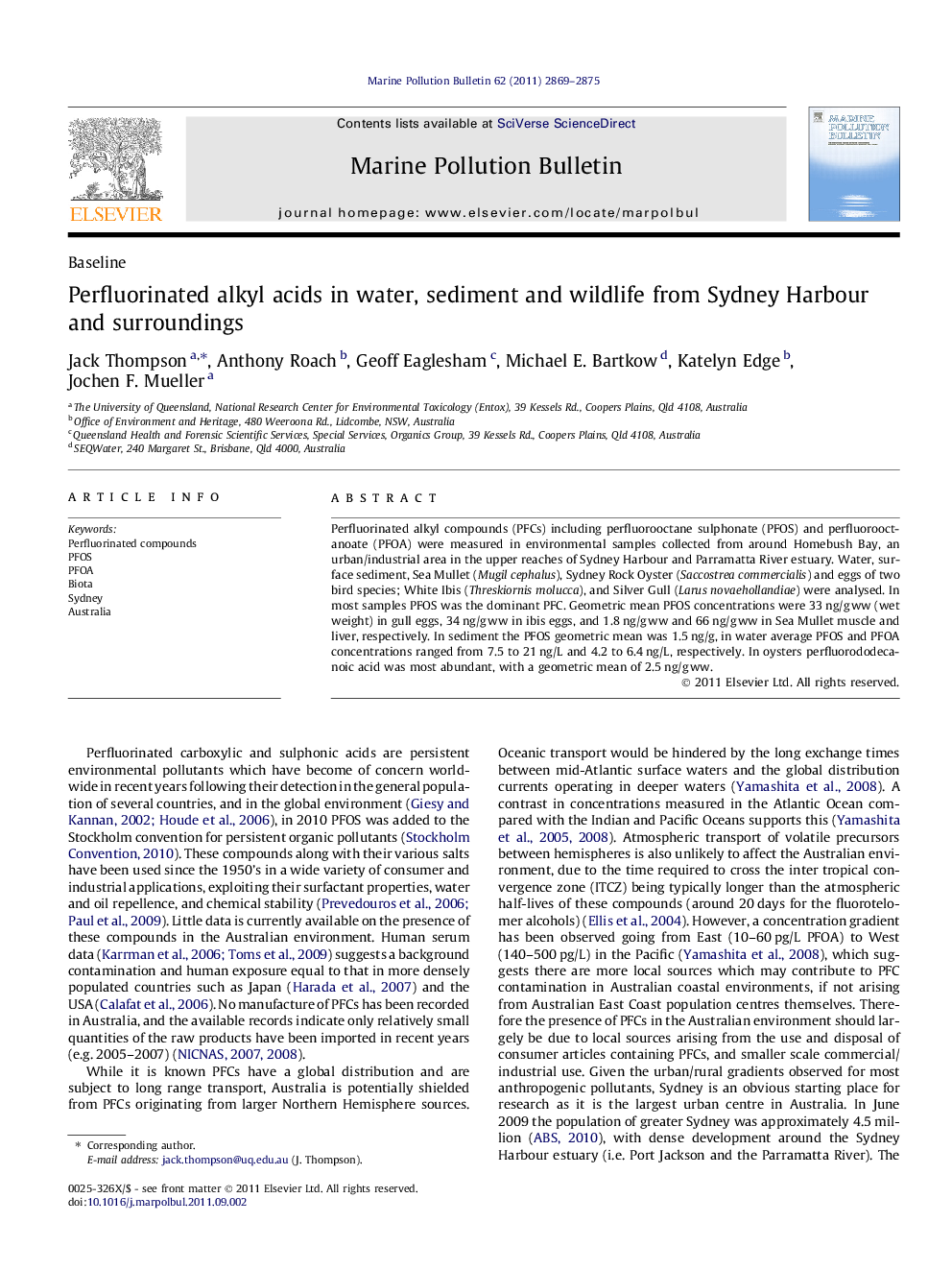| Article ID | Journal | Published Year | Pages | File Type |
|---|---|---|---|---|
| 6361150 | Marine Pollution Bulletin | 2011 | 7 Pages |
Perfluorinated alkyl compounds (PFCs) including perfluorooctane sulphonate (PFOS) and perfluorooctanoate (PFOA) were measured in environmental samples collected from around Homebush Bay, an urban/industrial area in the upper reaches of Sydney Harbour and Parramatta River estuary. Water, surface sediment, Sea Mullet (Mugil cephalus), Sydney Rock Oyster (Saccostrea commercialis) and eggs of two bird species; White Ibis (Threskiornis molucca), and Silver Gull (Larus novaehollandiae) were analysed. In most samples PFOS was the dominant PFC. Geometric mean PFOS concentrations were 33 ng/g ww (wet weight) in gull eggs, 34 ng/g ww in ibis eggs, and 1.8 ng/g ww and 66 ng/g ww in Sea Mullet muscle and liver, respectively. In sediment the PFOS geometric mean was 1.5 ng/g, in water average PFOS and PFOA concentrations ranged from 7.5 to 21 ng/L and 4.2 to 6.4 ng/L, respectively. In oysters perfluorododecanoic acid was most abundant, with a geometric mean of 2.5 ng/g ww.
⺠Study measured PFCs in sediment, water, fish and bird eggs from around Sydney Australia. ⺠PFCs detected in all matrices, with PFOS typically the most abundant. ⺠Highest PFOS concentrations in Sea Mullet liver, up to 107 ng/g. ⺠Comparable concentrations found in gull and ibis eggs indicating contamination of both marine and terrestrial food webs. ⺠Concentrations in fish muscle and oysters low suggesting no risk to humans from consumption of these species.
